Are you a Quiet Speculation member?
If not, now is a perfect time to join up! Our powerful tools, breaking-news analysis, and exclusive Discord channel will make sure you stay up to date and ahead of the curve.
It's the first Tuesday of the month, so it's time for the metagame update. Yes, even in the middle of spoiler season. Because, serious question, when aren't we in spoiler season? This year's release schedule is ridiculous; I could spend all my time just discussing cards and never run out of gas. I've got to draw a line and set some standards. And, more importantly, Adventures in the Forgotten Realms is so overshadowed by Modern Horizons 2 that it makes more sense to hold off on talking about that until the whole set is revealed.
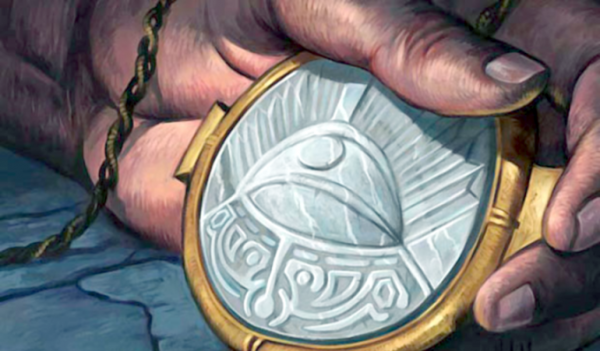
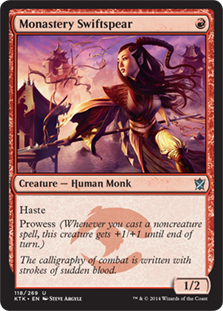 Every metagame update has its own weirdness. June's is high volatility. Again, Modern Horizons 2 released and with it came a flood of cards that are shaking up existing decks and making new ones. Players really like MH2 and brewed up a storm. As a result, the total number of distinct decks was up. Way up. The most decks ever since I restarted the monthly metagame updates. May saw 65 distinct decks place on MTGO. I recorded 87 individual decks in June. And that was with a fair amount of aggregation as decks evolved and new ones emerged. Plenty of decks changed dramatically from their first emergence to their final forms this month, but I kept them together because the central premise and strategy stayed the same despite numerous card changes. Had I not done so, the total decks would be close to 100.
Every metagame update has its own weirdness. June's is high volatility. Again, Modern Horizons 2 released and with it came a flood of cards that are shaking up existing decks and making new ones. Players really like MH2 and brewed up a storm. As a result, the total number of distinct decks was up. Way up. The most decks ever since I restarted the monthly metagame updates. May saw 65 distinct decks place on MTGO. I recorded 87 individual decks in June. And that was with a fair amount of aggregation as decks evolved and new ones emerged. Plenty of decks changed dramatically from their first emergence to their final forms this month, but I kept them together because the central premise and strategy stayed the same despite numerous card changes. Had I not done so, the total decks would be close to 100.
And this is despite the total decks being a fairly modest 457. Limited release events precluded any special or extra constructed events. In fact, I included several non-Wizards events just to fill out the data. These were two Preliminary-like and one Challenge-like event I found on MTGMelee. They had similar populations and record reporting as the official MTGO events which is good enough for me. Hopefully there are more non-Wizards events soon, the metagames these events suggested looked very different to MTGO's.
June Metagame
To make the tier list, a given deck has to beat the overall average population for the month. The average is my estimate for how many results a given deck “should” produce on MTGO. Being a tiered deck requires being better than “good enough;” in June the average population was 5.25, meaning a deck needed 6 results to beat the average and make Tier 3. This lower than any other month as these go. Which makes sense, given the breadth of the data. Then we go one standard deviation above average to set the limit of Tier 3 and cutoff for Tier 2. The STdev was 6.78, so that means Tier 3 runs to 13, and Tier 2 starts with 14 results and runs to 21. Subsequently, to make Tier 1, 22 decks are required. This is a very low threshold compared to previous months and a low STdev.
The Tier Data
All of which, again, makes sense when June produced 87 unique decks, the highest number ever. This is despite being on the low end of total decks, just 457 to May's 488. A very active brewing period will do that, and the months with set releases tend to have higher deck counts. Just not this high. The explosion of placing decks, low threshold, and narrow STdev means that more decks made the tier list than Ever. 20 decks total has been the average so far. June has 28 tiered decks. I'd like this to continue. Most months the same names are in every Challenge, which means I'm measuring the same players constantly, which tends to lead to an inbred metagame. This time there were players I'd never heard of before, and that's really important for format health. It will get better once paper events are back.
Amulet Titan was the top deck this month by a lot. I told you UR Prowess's performance last month was an outlier. Amulet has been a solid Tier 2 deck for months, so to see it as the top of Tier 1 might be surprising. However, context is important. Amulet Titan earned roughly two-thirds of its slots in the first two weeks after MH2 released. The main reason was that it was  easier to incorporate Urza's Saga, the card most players speculated would be broken, in that deck than anywhere else. It took a while to work out the Food and Ragavan decks that would dominate the later weeks. Thus, Amulet got a pass as a known good deck until the rest of the format caught up.
easier to incorporate Urza's Saga, the card most players speculated would be broken, in that deck than anywhere else. It took a while to work out the Food and Ragavan decks that would dominate the later weeks. Thus, Amulet got a pass as a known good deck until the rest of the format caught up.
June also highlights a minor problem with how I do the statistics. If I used the 95% confidence interval as my starting point instead of the average, more decks would be included and the tier threshold's lowered which would have grown Tier 1 by two, possibly three decks and two would have grown on net by up to three. UR Tempo, the blanket term for the non-Prowess UR aggro-control decks which sometimes feature Delver of Secrets, Dreadhorde Arcanist, or Murktide Regent was right at the cutoff to Tier 1, with Humans and Burn just missing Tier 2. However, the order still wouldn't have changed, so everyone is free to make up their own minds on the "real" tiers, and I think that including the decks below the current cutoff is giving them credit they don't deserve. Especially when they wouldn't make the power tiers regardless.
New Decks Rise
There a ton of totally new decks in this update. There are also a number of decks that have been substantially changed as the result of MH2. Trying to go into all the changes would take the entire article (and is Jordan's thing anyway) so I'm just going to do a quick rundown of the big ones:
- Blue Living End: Shardless Agent pushes Living End away from Jund into UB splashing red and green for Violent Outburst. Also allows more interaction than old lists
- UR Tempo: As mentioned, a blanket term for non-Prowess Izzet decks. Their unifying theme is cantrips, Dragon's Rage Channeler, and Ragavan, Nimble Pilferer
- BR Midrange: Essentially, Jund Rock without Tarmogoyf. Has become more aggressive to include Ragavan
- Jeskai Stoneblade: Take Jeskai Tempo from years ago, and remove Geist of Saint Traft and Spell Queller for Stoneforge Mystic and Ragavan
- Urza's Kitchen: Urza, Lord High Artificer partners with Asmoranomardicadaistinaculdacar and his Saga to produce lots of gigantic constructs that are buffed by making lots of food tokens
- Cascade Crashers: Take the cascade decks from February, add Shardless Agent, and replace Valki, God of Lies with Crashing Footfalls.
- Hell's Kitchen: Instead of Urza, Witch's Oven and Cauldron Familiar combine with Asmor to make food for early Feasting Troll Kings.
- Enchantress: Play lots of enchantments. Use Enchantress's Presence to draw all the cards to hide behind Solitary Confinement
That's not all that's changed, but these are the most dramatic additions to the tier list.
Old Decks Fall
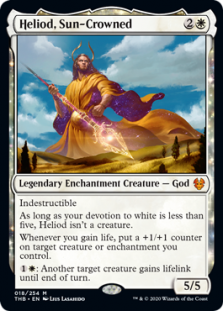 Meanwhile, a lot of previously established decks have fallen off. UR Prowess fell dramatically, but that's probably just a normal adjustment. It was severely overplayed last month. Similarly, previous boogeyman Heliod Company fell all the way into tier 3. Control decks are just hanging on, too. More shocking is Mono-Green Tron disappearing from the tier charts. Some of this is certainly a change in viability as the metagame shifts. Tron isn't great against fast aggro, Company doesn't like lots of removal, control doesn't work well in unpredictable metagames. However, some of this is also the allure of new cards. Players want to play with new things and since it's cheap to switch decks online, they're moving away from old standbys to try the new sauce. Don't write the old decks off yet. Let the meta settle for a few months.
Meanwhile, a lot of previously established decks have fallen off. UR Prowess fell dramatically, but that's probably just a normal adjustment. It was severely overplayed last month. Similarly, previous boogeyman Heliod Company fell all the way into tier 3. Control decks are just hanging on, too. More shocking is Mono-Green Tron disappearing from the tier charts. Some of this is certainly a change in viability as the metagame shifts. Tron isn't great against fast aggro, Company doesn't like lots of removal, control doesn't work well in unpredictable metagames. However, some of this is also the allure of new cards. Players want to play with new things and since it's cheap to switch decks online, they're moving away from old standbys to try the new sauce. Don't write the old decks off yet. Let the meta settle for a few months.
Power Rankings
Tracking the metagame in terms of population is standard practice. However, how do results actually factor in? Better decks should also have better results. In an effort to measure this, I use a power ranking system in addition to the prevalence list. By doing so I measure the relative strengths of each deck within the metagame. The population method gives a decks 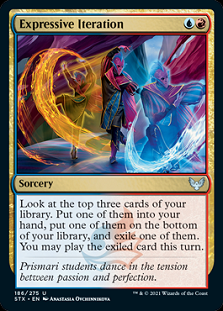 that consistently just squeaks into Top 32 the same weight as one that Top 8’s. Using a power ranking rewards good results and moves the winningest decks to the top of the pile and better reflects its metagame potential.
that consistently just squeaks into Top 32 the same weight as one that Top 8’s. Using a power ranking rewards good results and moves the winningest decks to the top of the pile and better reflects its metagame potential.
Points are awarded based on the population of the event. Preliminaries award points for record (1 for 3 wins, 2 for 4 wins) and Challenges are scored 3 points for Top 8, 2 for Top 16, 1 for Top 32. If I can find them, non-Wizards events will be awarded points according to how similar they are to Challenges or Preliminaries. Super Qualifiers and similar level events get an extra point if they’re over 200 players, and a fifth for over 400 players. No events awarded more than 3 points in June. There weren't any Super Qualifiers or higher events. Partially this was because of the new set release and partially this was for the MOCS final, which isn't counted because it consisted of 8 players.
The Power Tiers
The total points in June were down from May. This tracks with the smaller and fewer events. May had 790 total points while June has 706. It's the lowest point total this year for a full month, and one of the lowest ever. That's what happens with fewer Premier events. And remember, I found some non-Wizards events to include. The average points were 8.11, so 9 makes Tier 3. The STDev was 11.31, again down considerably from usual, so add 12 and Tier 3 runs to 21 points. Tier 2 starts with 22 points and runs to 34. Tier 1 requires at least 35 points.
There are only 26 decks in the power tiers, and for once it wasn't just the lowest placing decks from the population tier falling off. 4-Color Omnath had 7 decks, but only 8 points to miss the cut. Lantern Control made Tier 3 with 6 decks, but misses on power with 7 points. Both had decks with similar populations do much better on power, but Lantern and Omnath clearly only made Tier 3 because players will not give up on these decks. They're not performing anymore, but that doesn't seem to bother their pilots.
When one deck is far more popular than other options, it earns far more points. Amulet Titan is no exception and continues the trend of the past few months. Nothing else to see here.
Meanwhile, the movement in the rest of the tiers is substantial. BR Midrange jumped UR Tempo to make Tier 1 while Hammer Time and Jeskai Stoneblade shoot from the middle of the pack to just miss Tier 2. As previously mentioned, a lot of the decks that only had 6 results in the population did very well on points. The value of metagaming and brewing was well demonstrated this month.
Average Power Rankings
Finally, we come to the average power rankings. These are found by taking total points earned and dividing it by total decks, which measures points per deck. I use this to measure 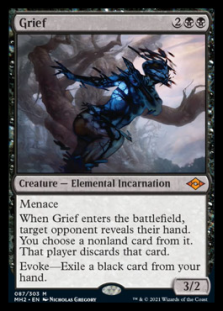 strength vs. popularity. Measuring deck strength is hard. There is no Wins-Above-Replacement metric for Magic, and I'm not certain that one could be credibly devised. The game is too complex and power is very contextual. Using the power rankings certainly helps, and serves to show how justified a deck’s popularity is. However, more popular decks will still necessarily earn a lot of points. Which tracks, but also means that the top tier doesn't move much between population and power, and obscures whether they really earned their position.
strength vs. popularity. Measuring deck strength is hard. There is no Wins-Above-Replacement metric for Magic, and I'm not certain that one could be credibly devised. The game is too complex and power is very contextual. Using the power rankings certainly helps, and serves to show how justified a deck’s popularity is. However, more popular decks will still necessarily earn a lot of points. Which tracks, but also means that the top tier doesn't move much between population and power, and obscures whether they really earned their position.
This is where the averaging comes in. Decks that earn a lot of points because they get a lot of results will do worse than decks that win more events, indicating which deck actually performs better. A higher average indicates lots of high finishes, where low averages result from mediocre performances and high population. Lower-tier decks typically do very well here, likely due to their pilots being enthusiasts. So be careful about reading too much into the results.
The Real Story
When considering the average points, the key is to look at how far-off a deck is from the baseline stat (the overall average of points/population). The closer a deck’s performance to the baseline, the more likely it is to be performing close to its “true” potential. A deck that is exactly average would therefore perform exactly as well as expected. The further away the greater the deviation from average, the more a deck under- or over-performs. On the low end, the deck’s placing was mainly due to population rather than power, which suggests it’s overrated. A high-scoring deck is the opposite.
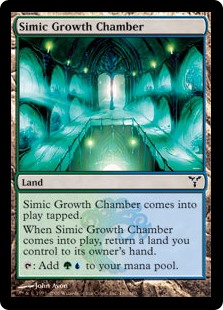 This is one of the lowest baselines ever at 1.43. Which makes sense given how many decks were in the overall sample. When most decks only earn one point, the average will be very low. Keep that in mind when considering how many decks are above the baseline this month.
This is one of the lowest baselines ever at 1.43. Which makes sense given how many decks were in the overall sample. When most decks only earn one point, the average will be very low. Keep that in mind when considering how many decks are above the baseline this month.
On the subject of the most popular deck, Amulet Titan has a very favorable average point total. However, it's a little deceptive. Amulet Titan has always been above baseline since I introduced this stat. And it's usually in the upper third, exactly where it is this month. This reads as a good deck that just keeps on keeping on while the format is moving around it. Eldrazi Tron being the highest average earner was surprising until I reminded myself that maindeck Chalice of the Void is really good when lots of decks are running mostly 1-mana cantrips and/or 0-mana artifacts.
A Transitory Phenomenon
And that is the June metagame. It will be very different come July's update. The impact of AFR's arrival will certainly be a factor, but a bigger one will be refinement. The new decks and everyone's sideboards are still quite rough. Another month of refinement and testing will tease out the better deck configurations and therefore I expect a huge shift over the next month. And now to wait and see if I'm right.





